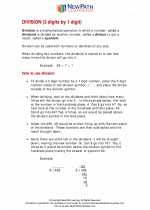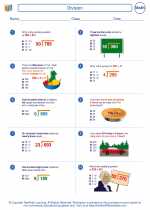Line
In mathematics, a line is a straight path that extends indefinitely in both directions. It is one of the most fundamental concepts in geometry and has various properties and characteristics that are important to understand.
Types of Lines
There are several types of lines that you should be familiar with:
- Straight Line: A line that does not curve and extends indefinitely in both directions.
- Horizontal Line: A straight line that runs parallel to the horizon and has a slope of 0.
- Vertical Line: A straight line that runs perpendicular to the horizon and has an undefined slope.
- Parallel Lines: Two or more lines that are always the same distance apart and never intersect.
- Perpendicular Lines: Two lines that intersect at a 90-degree angle.
Equation of a Line
The equation of a line in the coordinate plane is typically represented in the form y = mx + b, where m is the slope of the line and b is the y-intercept. The slope-intercept form of the equation is the most common way to represent a line.
Properties of Lines
Lines have several important properties, including:
- Length: A line extends indefinitely in both directions, so it has infinite length.
- Slope: The slope of a line indicates how steep it is and is calculated as the change in y-coordinates divided by the change in x-coordinates.
- Intersecting Lines: Two lines intersect if they cross each other at a single point.
- Transversal Lines: When a line intersects two or more other lines, it is called a transversal line, and it creates corresponding angles, alternate interior angles, alternate exterior angles, and consecutive interior angles.
Study Guide
When studying the concept of lines, it is important to focus on the following key points:
- Understand the basic definition of a line and its characteristics.
- Be able to identify and differentiate between different types of lines, such as straight, horizontal, vertical, parallel, and perpendicular lines.
- Learn how to calculate the slope of a line and understand its significance in determining the direction and steepness of the line.
- Practice solving problems involving the equation of a line in slope-intercept form.
- Explore the properties of intersecting and transversal lines, and how they create various angles.
By mastering these concepts and practicing related problems, you can develop a strong understanding of lines and their applications in mathematics and geometry.
[Line] Related Worksheets and Study Guides:
.◂Math Worksheets and Study Guides Sixth Grade. Division

 Worksheet/Answer key
Worksheet/Answer key
 Worksheet/Answer key
Worksheet/Answer key
 Worksheet/Answer key
Worksheet/Answer key
